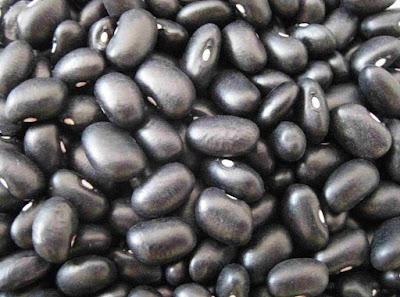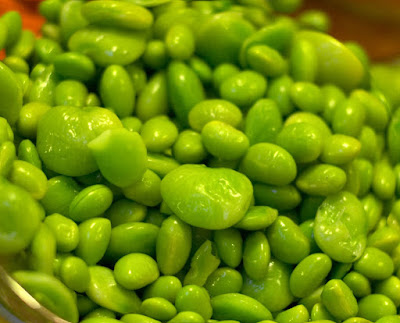 |
| Organic Lentil Vegetarian Soup |
Why Eat a High-Fiber Diet?
Benefits of soluble fiber. A diet high in fiber has many health benefits, including assisting to prevent ailments and conditions such as Crohn's disease, diabetes and irritable bowel syndrome.
The health benefits of an efficient bowel aside, a high-fiber diet can also decrease the risk of stroke, hypertension, and heart disease.
Eating fiber has been shown to help keep your digestive system running well, support heart health and help maintain normal blood sugar levels.
Related Post- How Does Eating Fiber Help You Lose Weight?
How Much Fibre Can You Have a Day?
Presently, dietary fibre intakes among adults in the United States average about 15 grams a day. That's about half the recommended amount.
The National Academy of Medicine recommends that total dietary fiber intake should be 25 to 30 grams a day from food, not fiber supplements.
The recommended daily intake of fiber is 14 grams per 1000 calories consumed. For example if your calorie requirement is 1500 calories per day, you should be aiming for about 21grams of fibre.
For women (under 50 years of age) this usually equates to about 21 to 25 grams of fiber per day, and for men (less than 50 years of age) about 35 to 38 grams.
Adults over 50 require less fiber (30 grams for dudes and 21 grams for ladies) due to decreased food consumption.
What Are The Different Types of Fiber?
Soluble fiber vs. insoluble fiber. Food fiber comes in two varieties, soluble and insoluble, and most plant-based foods contain a mixture of the two. Soluble fiber turns to gel-like in the stomach and slows down digestion, which assists in lowering cholesterol and blood glucose.
Insoluble fiber, on the other hand, remains unchanged all the way to your colon, making waste heavier and softer so it can pass through the intestines more easily. Regardless of these differences, neither type of fiber is ever absorbed into the body.
Insoluble fiber is found in foods such as wheat bran, vegetables, and whole grains.
Soluble fiber is found in oat bran, barley, nuts, seeds, beans, lentils, peas, and some fruits and vegetables. It is also found in psyllium powder, a common fiber supplement sold on Amazon.com. If you are busy, you have no time to cook for yourself and don’t eat right. Some people recommend taking fiber supplements. It is better than nothing at all.
Some types of soluble fiber may help lower risk of heart disease.
How to Get More Fibre in Your Diet?
To get more of the high-fiber belly-filling, cholesterol-lowering, metabolism-boosting good stuff, try these food hacks below. It will help you increase or start your high fiber intake while adding flavor and variety to your diet.
16) Popcorn. It's a great source of fiber. Munch on 2 cups of low-fat popcorn for 2 grams of fiber. Just use minimal salt and other flavorings.
15) Drop a whole orange into the blender to flavor your morning smoothie. (Uh, don't forget to peel it first.) One orange has nearly 3 grams more fiber than even the pulpiest orange juice.
14) If you are a very busy and have no time to cook breakfast. Choose cereals with at least 5 grams of fiber per serving.
13) Keep a jar of oat bran or wheat germ handy.
12) Add lentils to soups. One-quarter cup of these tiny legumes is crammed with 11 grams of fiber.
11) Use whole-wheat flour when possible in your cooking and baking.
10) Perk up your favorite jarred pasta sauce with ½ cup of fresh or frozen chopped spinach. The spinach will adopt the flavor of the sauce and pad the fiber count by more than 2 grams.
9) Crunch on 1 ounce (about a handful) of almonds, peanuts or sunflower seeds for 2 to 4 grams of fiber.
8) Snack on fresh fruit, dried fruit, nuts or whole meal crackers.
7) Add fiber to chips and salsa by adding some black beans or kidney beans into jarred salsa.
6) Add fresh fruit to every meal. One of the best ways for you to increase your overall fiber intake is to eat fruit in its whole, unprocessed form. Eating an apple with its peel intact (you can also blend it, just add a small amount of water) instead of drinking apple juice is one example (do not juice it).
Bite an apple, spread on some almond butter, bite again, and repeat.
5) You can eat the skin of your next baked potato for 2 extra grams of fiber.
4) As a common rule, include at least one serving of whole grain in every meal.
3) Drop a handful of berries to add flavor to plain or vanilla yogurt. Half a cup provides 4 grams of fiber.
2) Sprinkle garbanzo beans into your salad. A half-cup delivers up to 6 grams of extra fiber.
1) To get started eating more fiber with minimal side effects; add it slowly. Start adding 5 grams of fiber per day. And be sure to drink plenty of water, which fiber needs to help move things along.
Start to build up slowly. You may want to take several weeks to increase to the recommended amount of fiber in your diet. As you begin to increase your daily fiber intake, start slow and build up gradually. This allows your body to adapt.
1) Split Peas (cooked). Fiber content- 16.3 grams per cup
2) Lentils (cooked). Fiber content-: 15.6 grams per cup. Try this easy, fast and tasty recipe… Easy Vegetarian Lentil Soup Recipe- (Crock Pot Optional)
3) Black Beans (cooked). Fiber content- 15 grams per cup, cooked. You should try this delicious Brazilian cuisine…
(a) Homemade Refried Black Beans Recipe (Frijoles negros refritos)
(b) Feijoada Completa- Smoked Meat and Black Bean Stew- Brazilian Food Recipe
4) Lima Beans (cooked). Fiber content- 13.2 grams per cup. Learn this quick food hacks… How to Cook Beans or Legumes
5) Artichokes (cooked). Fiber content- 10.3 grams per medium vegetable
6) Okra is an excellent source of soluble fiber. DO YOU KNOW?... How to Cook Okra Without The Slime? - 15 Slime-Free Okra Recipes
Related Post: Download NOW this handy tool… High-Fiber-Foods-Chart-Printable-PDF
REFERENCES:
U.S. Department of Agriculture: "Dietary Guidelines for Americans, 2010."
Institute of Medicine: "Dietary Reference Intakes for Energy, Carbohydrate, Fiber, Fat, Fatty Acids, Cholesterol, Protein, and Amino Acids."
Slavin, J. Journal of the American Diet Association; October 2008.
U.S. Department of Agriculture: "What We Eat in America: NHANES 2007-2008."
Sun, Q. Archives of Internal Medicine, Sept. 13, 2010.
Siri-Tarino, P. The American Journal of Clinical Nutrition, March 2010.
Aldoori, W. Journal of Nutrition, April 1998.
Brown, L. The American Journal of Clinical Nutrition; January 1999.
McKeown, N. Diabetes Care, February 2004.
McKeown, N. The American Journal of Clinical Nutrition, August 2002.







Great Article.! Very informative as high fiber food is very important for our body to perform day to day operations.
ReplyDelete